-
 Bitcoin
Bitcoin $101,898.5005
-0.75% -
 Ethereum
Ethereum $2,258.1125
-1.07% -
 Tether USDt
Tether USDt $1.0004
0.01% -
 XRP
XRP $2.0178
-2.93% -
 BNB
BNB $624.0243
-1.53% -
 Solana
Solana $134.3298
-0.90% -
 USDC
USDC $0.9999
0.01% -
 TRON
TRON $0.2675
-2.05% -
 Dogecoin
Dogecoin $0.1538
-1.96% -
 Cardano
Cardano $0.5482
-1.11% -
 Hyperliquid
Hyperliquid $35.5636
5.45% -
 Bitcoin Cash
Bitcoin Cash $453.4902
-1.66% -
 Sui
Sui $2.5134
-2.97% -
 UNUS SED LEO
UNUS SED LEO $9.1292
1.77% -
 Chainlink
Chainlink $11.8457
-1.60% -
 Stellar
Stellar $0.2312
-2.73% -
 Avalanche
Avalanche $16.9721
0.29% -
 Toncoin
Toncoin $2.7549
-3.82% -
 Shiba Inu
Shiba Inu $0.0...01081
-1.10% -
 Litecoin
Litecoin $80.8250
-0.71% -
 Hedera
Hedera $0.1374
0.21% -
 Monero
Monero $305.4827
-2.36% -
 Ethena USDe
Ethena USDe $1.0006
0.00% -
 Dai
Dai $1.0000
-0.01% -
 Polkadot
Polkadot $3.2085
-3.12% -
 Bitget Token
Bitget Token $4.0845
-3.13% -
 Uniswap
Uniswap $6.3353
-1.63% -
 Pi
Pi $0.5085
-0.70% -
 Pepe
Pepe $0.0...08913
-3.82% -
 Aave
Aave $232.7090
-0.58%
How to use KDJ in a downward trend? What should I pay attention to when grabbing a rebound?
In a downward trend, use the KDJ indicator to spot oversold conditions and bullish crossovers, confirming with price action and volume for successful rebounds.
May 23, 2025 at 05:00 am
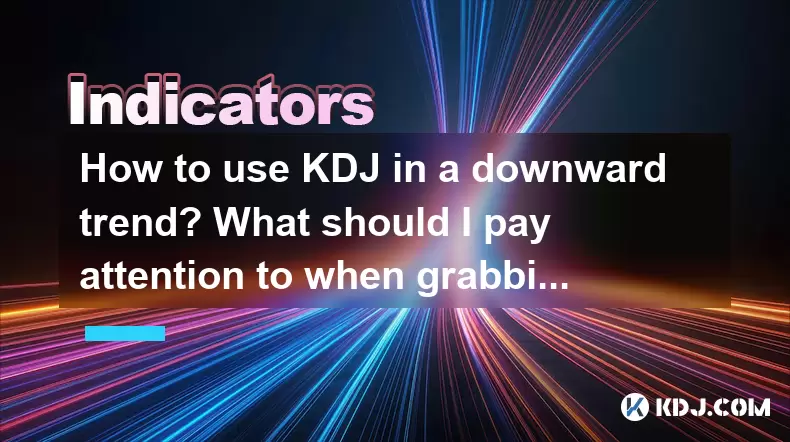
The KDJ indicator is a popular technical analysis tool among traders in the cryptocurrency market. It helps traders identify potential trend reversals and overbought or oversold conditions. In a downward trend, using the KDJ indicator effectively requires understanding its components and signals. When grabbing a rebound in such a trend, traders must pay close attention to various factors to maximize their chances of success. This article will explore how to use the KDJ indicator during a downward trend and what to watch for when attempting to capitalize on rebounds.
Understanding the KDJ Indicator
The KDJ indicator, also known as the Stochastic Oscillator, consists of three lines: the K line, the D line, and the J line. The K and D lines are the primary focus, with the J line being a derivative of these two. The indicator oscillates between 0 and 100, with readings above 80 indicating overbought conditions and readings below 20 suggesting oversold conditions.
The K line represents the current price's position relative to the highest and lowest prices over a given period. The D line is a moving average of the K line, smoothing out its fluctuations. The J line is calculated as 3K - 2D, and it's often used to identify more sensitive signals.
Using KDJ in a Downward Trend
In a downward trend, the KDJ indicator can help traders identify potential short-term rebounds or confirm the continuation of the downtrend. Here's how to use the KDJ indicator effectively in such a scenario:
Identifying Oversold Conditions: When the KDJ lines fall below 20, it suggests that the asset may be oversold and due for a potential rebound. Traders can look for this signal as an opportunity to enter a long position, expecting a short-term price increase.
Watching for Bullish Crossovers: A bullish crossover occurs when the K line crosses above the D line from below. This signal can indicate a potential reversal or a short-term uptick in a downward trend. Traders should look for this crossover, especially if it happens near the oversold level.
Confirming with Price Action: While the KDJ indicator can provide valuable signals, it's crucial to confirm these signals with price action. Look for bullish candlestick patterns or a break above key resistance levels to increase the likelihood of a successful rebound.
Key Considerations When Grabbing a Rebound
Grabbing a rebound in a downward trend can be profitable but comes with significant risks. Here are some key considerations to keep in mind:
Risk Management: Always set stop-loss orders to limit potential losses. In a downward trend, the market can quickly resume its bearish momentum, so it's essential to protect your capital.
Volume Analysis: Look for an increase in trading volume during the rebound. Higher volume can confirm the strength of the price move and increase the likelihood of a successful trade.
Timeframe Selection: Different timeframes can provide different signals. For short-term rebounds, consider using shorter timeframes like 15-minute or 1-hour charts. For longer-term rebounds, daily or weekly charts may be more appropriate.
Market Sentiment: Pay attention to overall market sentiment. If the broader market is bearish, even a strong rebound may not last long. Use sentiment indicators or read market analysis to gauge the overall mood.
Practical Steps for Using KDJ to Grab a Rebound
Here are some practical steps to follow when using the KDJ indicator to grab a rebound in a downward trend:
Monitor the KDJ Indicator: Keep an eye on the KDJ lines on your chosen timeframe. Look for the K and D lines to fall below 20, indicating an oversold condition.
Identify a Bullish Crossover: Wait for the K line to cross above the D line from below. This signal suggests a potential short-term uptick.
Confirm with Price Action: Look for bullish candlestick patterns or a break above key resistance levels to confirm the rebound signal.
Enter a Long Position: Once you have confirmation from both the KDJ indicator and price action, consider entering a long position. Set your entry price at the current market price or slightly above a key resistance level.
Set a Stop-Loss Order: Place a stop-loss order below the recent swing low to limit potential losses if the rebound fails.
Monitor the Trade: Keep an eye on the trade and be ready to take profits if the price reaches your target or shows signs of reversing.
Common Mistakes to Avoid
When using the KDJ indicator and grabbing rebounds in a downward trend, it's essential to avoid common mistakes that can lead to losses:
Ignoring Confirmation Signals: Don't rely solely on the KDJ indicator. Always confirm signals with price action and other technical indicators.
Overtrading: Avoid entering too many trades based on every KDJ signal. Focus on high-probability setups with strong confirmation.
Neglecting Risk Management: Always use stop-loss orders and manage your position sizes to protect your capital.
Chasing Rebounds: Don't chase a rebound that has already moved significantly. Wait for a pullback or a new signal before entering a trade.
Frequently Asked Questions
Q: Can the KDJ indicator be used on all cryptocurrency pairs?
A: Yes, the KDJ indicator can be applied to all cryptocurrency pairs. However, the effectiveness of the indicator may vary depending on the liquidity and volatility of the specific pair.
Q: How often should I check the KDJ indicator for signals?
A: The frequency of checking the KDJ indicator depends on your trading style and timeframe. For short-term trading, you might check it every few hours or even more frequently. For longer-term trading, daily or weekly checks may be sufficient.
Q: Is the KDJ indicator more effective in certain market conditions?
A: The KDJ indicator can be effective in both trending and ranging markets. However, it may provide more reliable signals in a ranging market where prices oscillate between clear levels of support and resistance.
Q: Can the KDJ indicator be combined with other technical indicators?
A: Yes, the KDJ indicator can be combined with other technical indicators to increase the reliability of signals. Common combinations include using the KDJ with moving averages, the Relative Strength Index (RSI), or the Moving Average Convergence Divergence (MACD).
Disclaimer:info@kdj.com
The information provided is not trading advice. kdj.com does not assume any responsibility for any investments made based on the information provided in this article. Cryptocurrencies are highly volatile and it is highly recommended that you invest with caution after thorough research!
If you believe that the content used on this website infringes your copyright, please contact us immediately (info@kdj.com) and we will delete it promptly.
- Cryptocurrencies, Coingecko, and Trending Tokens: What's Hot Now?
- 2025-06-23 23:05:12
- Bitcoin, Meerkat, and Onchain Engagement: A New Era of Crypto
- 2025-06-23 23:25:12
- Cloud Mining, Bitcoin, and XRP: A 2025 Perspective
- 2025-06-23 23:25:12
- Neo Pepe Coin: Meme Crypto with Explosive Potential?
- 2025-06-23 23:45:12
- FUNToken: Decoding Past Trends and Getting Started in the Gaming Crypto Sphere
- 2025-06-23 22:25:12
- Eyenovia Goes Crypto: A HYPE Treasury and Potential Rebrand
- 2025-06-23 23:45:12
Related knowledge

Is it contradictory that the moving average system is arranged in a bullish pattern but the DMI shows a decline in trend strength?
Jun 23,2025 at 11:43pm
Understanding the Moving Average and DMI RelationshipIn cryptocurrency trading, technical analysis plays a crucial role in identifying potential trends and making informed decisions. Two of the most commonly used indicators are the Moving Average (MA) and the Directional Movement Index (DMI). While both tools aim to provide insight into market direction...

What is the significance of the gap formed by the gap opening not being filled within five days?
Jun 23,2025 at 09:42pm
Understanding Gaps in Cryptocurrency TradingIn the world of cryptocurrency trading, a gap refers to a situation where the price of an asset jumps from one level to another without any trading activity occurring between those two levels. This often happens over weekends or holidays when the market is closed, and significant news or events occur that impa...
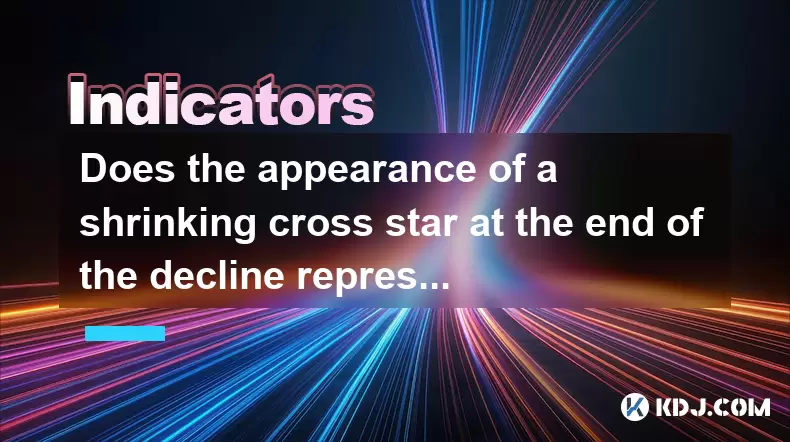
Does the appearance of a shrinking cross star at the end of the decline represent a signal to stop the decline?
Jun 24,2025 at 12:14am
Understanding the Shrinking Cross Star PatternIn the world of cryptocurrency trading, candlestick patterns play a crucial role in technical analysis. One such pattern is the shrinking cross star, which often appears at the end of a downtrend. This pattern consists of a candle with a small body, typically appearing after a series of bearish candles, and ...
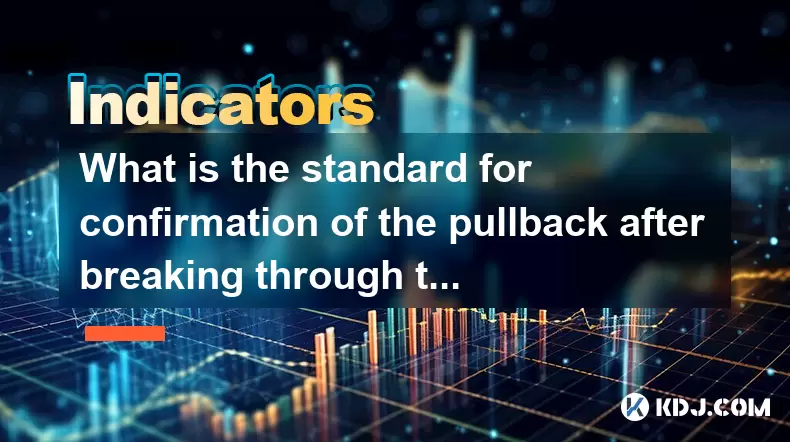
What is the standard for confirmation of the pullback after breaking through the neckline with large volume?
Jun 23,2025 at 11:28pm
Understanding the Neckline in Technical AnalysisIn technical analysis, the neckline is a critical support or resistance level that appears in chart patterns such as head and shoulders, double tops, and double bottoms. It typically connects two or more lows (in the case of a head and shoulders top) or highs (in the case of a head and shoulders bottom). W...
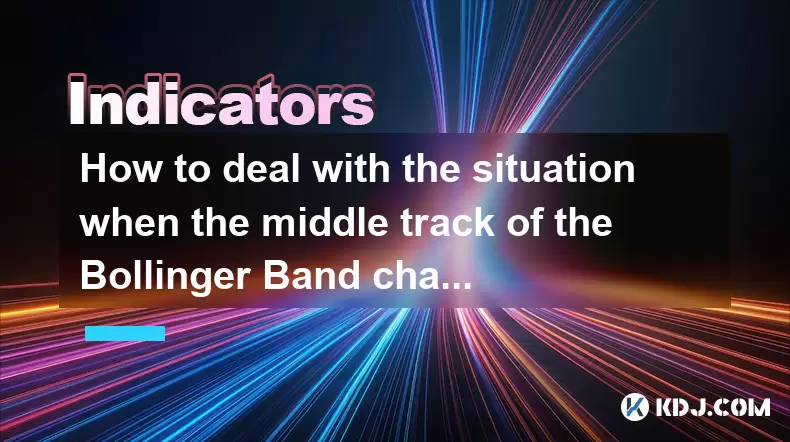
How to deal with the situation when the middle track of the Bollinger Band changes from support to resistance?
Jun 23,2025 at 11:22pm
Understanding the Bollinger Band Middle TrackThe Bollinger Band is a widely used technical indicator in cryptocurrency trading. It consists of three lines: the upper band, the lower band, and the middle track, which is typically a 20-period simple moving average (SMA). Traders often rely on the middle track as a dynamic support or resistance level. Howe...
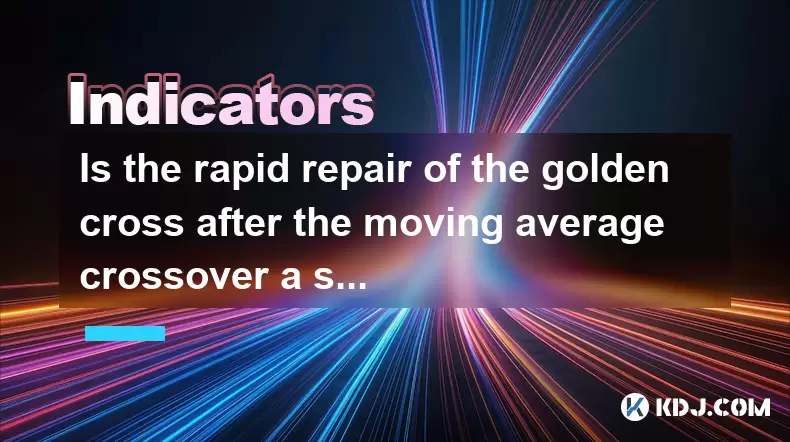
Is the rapid repair of the golden cross after the moving average crossover a signal of inducing short selling?
Jun 24,2025 at 12:01am
Understanding Moving Averages and Their Role in Technical AnalysisIn the realm of technical analysis, moving averages (MAs) are among the most widely used tools by traders to identify trends and potential reversals. These indicators smooth out price data over a specific time period, offering a clearer view of market direction. The two most common types ...

Is it contradictory that the moving average system is arranged in a bullish pattern but the DMI shows a decline in trend strength?
Jun 23,2025 at 11:43pm
Understanding the Moving Average and DMI RelationshipIn cryptocurrency trading, technical analysis plays a crucial role in identifying potential trends and making informed decisions. Two of the most commonly used indicators are the Moving Average (MA) and the Directional Movement Index (DMI). While both tools aim to provide insight into market direction...

What is the significance of the gap formed by the gap opening not being filled within five days?
Jun 23,2025 at 09:42pm
Understanding Gaps in Cryptocurrency TradingIn the world of cryptocurrency trading, a gap refers to a situation where the price of an asset jumps from one level to another without any trading activity occurring between those two levels. This often happens over weekends or holidays when the market is closed, and significant news or events occur that impa...

Does the appearance of a shrinking cross star at the end of the decline represent a signal to stop the decline?
Jun 24,2025 at 12:14am
Understanding the Shrinking Cross Star PatternIn the world of cryptocurrency trading, candlestick patterns play a crucial role in technical analysis. One such pattern is the shrinking cross star, which often appears at the end of a downtrend. This pattern consists of a candle with a small body, typically appearing after a series of bearish candles, and ...

What is the standard for confirmation of the pullback after breaking through the neckline with large volume?
Jun 23,2025 at 11:28pm
Understanding the Neckline in Technical AnalysisIn technical analysis, the neckline is a critical support or resistance level that appears in chart patterns such as head and shoulders, double tops, and double bottoms. It typically connects two or more lows (in the case of a head and shoulders top) or highs (in the case of a head and shoulders bottom). W...

How to deal with the situation when the middle track of the Bollinger Band changes from support to resistance?
Jun 23,2025 at 11:22pm
Understanding the Bollinger Band Middle TrackThe Bollinger Band is a widely used technical indicator in cryptocurrency trading. It consists of three lines: the upper band, the lower band, and the middle track, which is typically a 20-period simple moving average (SMA). Traders often rely on the middle track as a dynamic support or resistance level. Howe...

Is the rapid repair of the golden cross after the moving average crossover a signal of inducing short selling?
Jun 24,2025 at 12:01am
Understanding Moving Averages and Their Role in Technical AnalysisIn the realm of technical analysis, moving averages (MAs) are among the most widely used tools by traders to identify trends and potential reversals. These indicators smooth out price data over a specific time period, offering a clearer view of market direction. The two most common types ...
See all articles
























































































